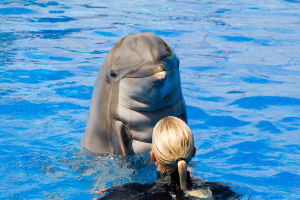Every year, millions of tons of plastic enter our oceans. Floating bottles, bags, straws, and microplastics have become a common sight in marine environments.
While this affects a wide range of ocean species, sea turtles are among the most vulnerable.
These gentle creatures, which have roamed the oceans for over 100 million years, now face an escalating threat from a modern material: plastic.
How Sea Turtles Mistake Plastic for Food
Plastic debris in the ocean often resembles natural food. A floating plastic bag, for example, looks a lot like a jellyfish—the favorite food of many sea turtle species. Once ingested, plastic can cause serious internal damage, block digestion, or make the turtle feel full while it starves. According to a 2015 study published in the journal Global Change Biology, more than half of the world's sea turtles have consumed plastic.
Choking and Entanglement Hazards
It's not just what turtles eat—it's also what they get caught in. Plastic six-pack rings, fishing lines, and netting often trap young turtles and prevent them from swimming or surfacing for air. Entangled turtles may drown or become easy targets for predators. This is especially dangerous for hatchlings, which are already at high risk of natural predators. Marine biologists have observed that entanglement is a leading cause of problems for sea turtles worldwide.
Disrupting Natural Behavior and Habitats
Plastic also interferes with the natural behaviors of sea turtles. On nesting beaches, plastic litter can block access to suitable nesting areas or trap hatchlings trying to reach the ocean. In the water, floating waste may alter migration routes or disrupt feeding grounds. Furthermore, plastic breaks down into microplastics, which contaminate seaweed and other vegetation that some species depend on. This pollution ultimately affects their health and ability to reproduce.
Microplastics in the Marine Food Chain
One of the most alarming issues is the rise of microplastics—tiny particles that result from the breakdown of larger plastic debris. These are often ingested not only by turtles but by smaller marine animals that form the base of the oceanic food web. When turtles eat these smaller animals, they also consume the plastics. Over time, the buildup can weaken their immune systems, cause developmental issues, and reduce reproductive success.
What Science Tells Us
Scientific research strongly supports the urgent need to reduce plastic pollution. A report from the United Nations Environment Programme (UNEP) warns that if current trends continue, there will be more plastic than fish in the ocean by 2050. Researchers from the University of Queensland in Australia estimate that a turtle's chance of dying increases by 22% once it ingests just one piece of plastic. These facts are a clear call to action.
Global Efforts and Solutions
Thankfully, several countries and organizations are stepping up. Initiatives to ban single-use plastics are gaining traction. Non-profits like the Sea Turtle Conservancy are involved in cleanup efforts, rescue missions, and educational outreach. Some coastal communities are engaging in “plastic-free beach" campaigns, while companies are innovating biodegradable alternatives to plastic packaging. These efforts are not only saving turtles but protecting entire marine ecosystems.
What You Can Do to Help
Every person can play a role. Reduce your use of disposable plastic items like straws, bags, and cutlery. Choose reusable water bottles, cloth bags, and eco-friendly containers. Participate in local beach cleanups or sponsor ocean conservation programs. Spread awareness among friends and family—especially young people—about how daily habits affect marine life. Even choosing sustainable seafood helps, since it supports fishing practices that are less likely to trap turtles in waste or nets.
Responsible Tourism Is Key
If you travel to coastal or tropical areas, be a responsible visitor. Don't leave plastic waste on the beach, avoid touching or disturbing turtle nests, and support eco-conscious resorts or tour operators. Some conservation centers offer guided tours or volunteer programs where tourists can help protect turtles. This not only boosts conservation funding but also spreads the message globally.
Education Makes a Difference
Schools, social media, and community groups are powerful tools for change. When people understand the real consequences of plastic waste, they're more likely to support change. Educational campaigns that show how a plastic bag can harm a turtle are often eye-opening, especially for younger audiences. Films like A Plastic Ocean or Mission Blue have brought global attention to the crisis, making it clear that awareness is the first step toward solution.
Success Stories That Inspire
There is hope. In Costa Rica, for example, some beaches that were once covered in trash are now turtle nesting sites again, thanks to sustained community cleanup efforts. In other places, stricter beach lighting laws and plastic bans have led to higher turtle hatchling survival rates. These examples show that when people come together, meaningful change is possible.
Conclusion: Your Choices Shape the Ocean's Future
Sea turtles cannot speak for themselves, but our actions speak volumes. Whether it's a single plastic straw or a shopping bag, every piece avoided is one less danger in the ocean. By making simple changes in our lifestyle and supporting larger conservation efforts, we all have the power to protect these incredible marine creatures.
What step will you take today to protect sea turtles from plastic pollution? Let your next choice be one that makes a difference.


